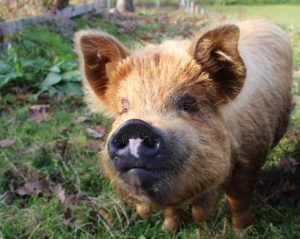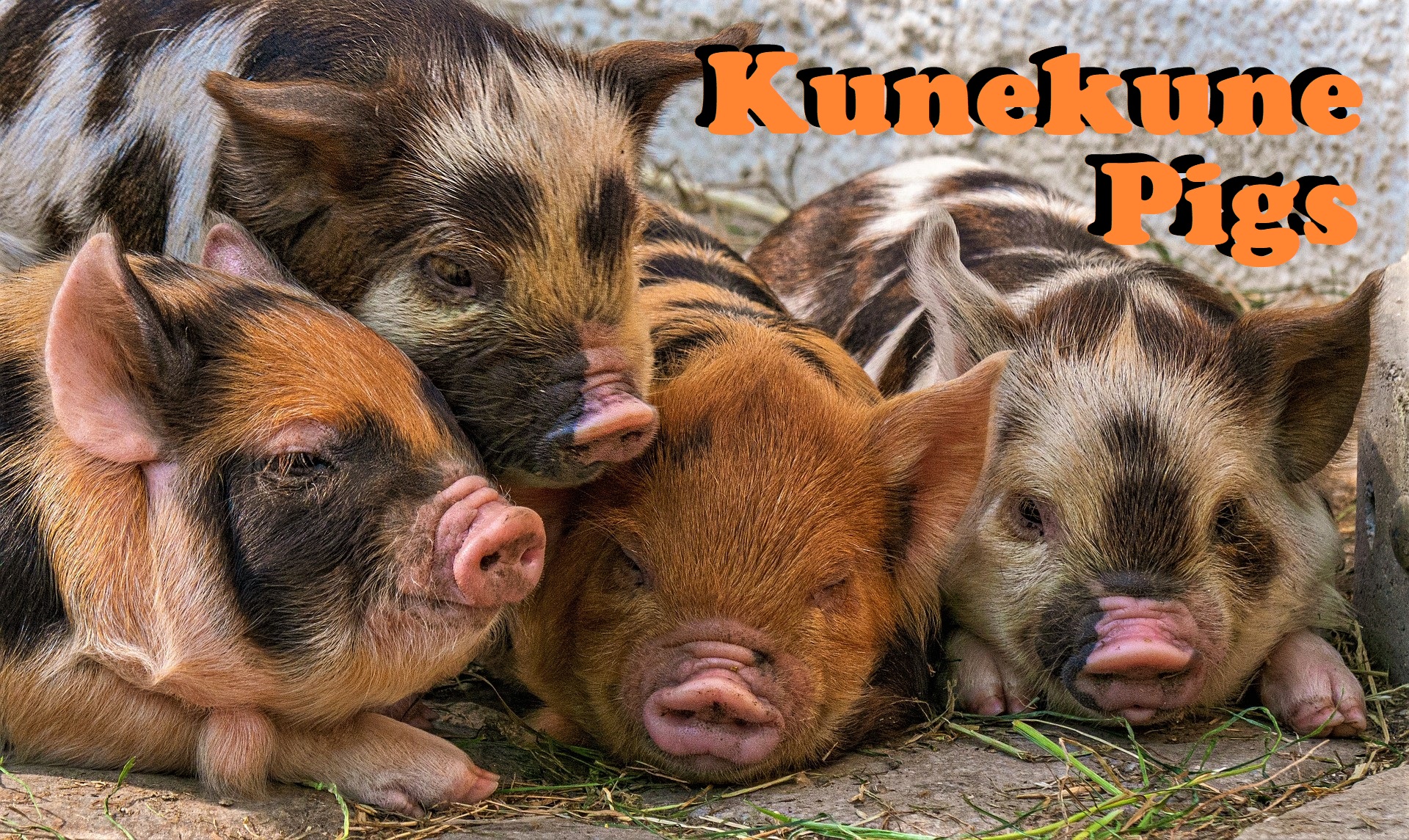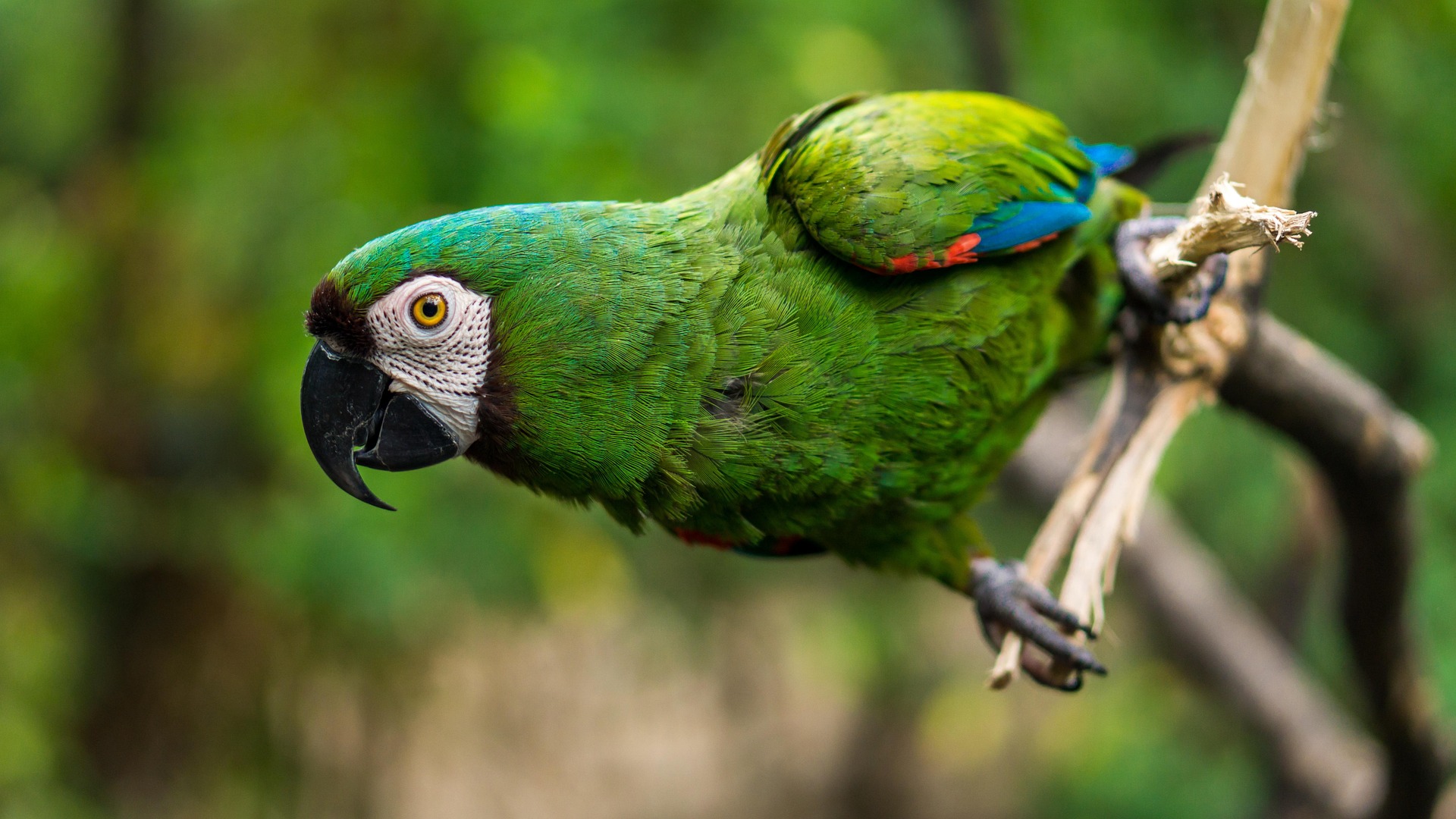Kunekune pigs are a fascinating breed to me. They are a small heritage breed that are perfect for a small homestead. When I first got into researching about Kunekune’s, I was full of questions. So, this article is hopefully all you need to know about the Kunekune pig breed.
This Post At A Glance
Pig Terms
About Kune Kune’s
General Needs
-Feeding
-Type Of Feeder
-Shelter and Space Requirements
-Bedding
-Fencing
-Waterer
Breeding
-Breeding Age
-Litter Per Year
-Productive Years
-Gestation
-Number Of Piglets
Piglet Care
-Weaning Age
-Sexing Age
-Birth To Butcher
-Prevent Crushing By Mom
Other Things To Know
-Lifespan
-Size
-Colors
-Purchase Cost
-Hoof Care
-What’s Too Hot?
-What’s Too Cold?
-Potty Trained?
-Health Care
-Wattles
Conclusion
 Pig Terms To Get Familiar With
Pig Terms To Get Familiar With
Boar: mature intact male pig
Barrow: castrated male pig
Sow: female that has given birth before
Guilt: female that has not given birth
Farrowing: giving birth to piglets
*FINALLY, A Smart Coop For Chickens (CLICK HERE)*
About
Kunekune’s are the smallest recognized pig breed. Originating from New Zealand, they have a very mellow and laid-back temperament. This makes them one of the better breeds to have around if you have kids. This also makes them a great choice for a pet pig if that’s something you’re looking for. Because of the shorter upturned snout, they root around in the soil less, causing less damage to pastures. Something to note is that they are considered a “lard” breed pig. This means they are better suited for making lard than muscle meat. The lard can be used towards cooking, baking, soap making, ect . . .
Are Kune’s True Pasture Pigs? Yes & No. Pigs are omnivores and do not have a rumen like goats/cows/sheep. Though Kune’s may be able to survive pretty well on just grass, they really benefit from more variety than that. I also think it’s safe to say that very few farms have ideal pasture for pigs year-round. If you want to avoid supplementing your Kune’s with grain, then a good alternative that many pig owners do is have a cow or goats for milk. Milk raised pork makes for tasty meat . . . or so I hear. Fresh milk can help satisfy any nutritional gaps and protein needs in your pigs.
General Needs
Feeding: This again can vary depending on climate and natural forage in your area. In general, you can expect to feed each pig about 1 cup in the morning and 1 cup in the evening of 16% protein pig feed in addition to good pasture. Double that amount for winter feeding with access to plenty of hay. Alfalfa pellets may also be used to supplement the diet in winter to add protein (about 1/3 cup twice per day with water to soften). Yes, you can do alfalfa hay, but pellets are a lot less wasteful. Other good additions to their diet are any vegetarian matter or kitchen scraps (make sure to cook potatoes). AVOID meat or anything that would be considered junk food. If it’s not good for you, it’s not good for them.
Type Of Feeder: This will depend on your personal preference and how naughty your pigs are (most are naughty). Many pigs are messy and tend to tip over their feeders. If you only have a few pigs, then you may prefer rubber feed bowls. If you have several pigs, then you may prefer a trough or gravity feeder.
Shelter and Space Requirements: Nothing fancy is needed . . . unless you live in a very cold area. A minimum shelter size for 2 pigs would be roughly 4 feet by 6 feet. A good shelter will be draft free and dry. Farrowing huts should be roughly 7.5 by 5 feet. A pen size of 8′ by 16′ is good for 2 pigs and allows room to move around. For acreage, it’s about 5-6 pigs per acre.
Bedding: What’s nice about pigs is that they tend to keep their bedding clean. Hay, straw, and pine wood chips (not cedar) are your best options. Ideally, you’d do 2 inches wood chips topped with another 4 inches of straw or hay for a nicely insulated bed. HOWEVER! If you have piglets on the way, then just do woodchips. This still provides some bedding but also makes it easier for the piglets to maneuver out of mom’s way and not get crushed.
 Fencing: Hog panels paired with electric fencing is the most popular method for fencing pigs. Electric fencing is generally placed in 2 spots within the pig pen. The top strand is about eye level with the pig. And the bottom strand is eye level when the pig is sniffing or rooting the ground. I’d never recommend welded wire for any animal bigger than a rabbit or chicken. It’s not worth it and the welds tend to come loose. Horse fencing is a bit more robust yet still affordable. Pigs are escape artists, if there is a weakness in the fencing, they will find it. They will dig, jump, and climb if they feel their needs are not being met. Make sure to think ahead and install fencing that is also suitable for piglets.
Fencing: Hog panels paired with electric fencing is the most popular method for fencing pigs. Electric fencing is generally placed in 2 spots within the pig pen. The top strand is about eye level with the pig. And the bottom strand is eye level when the pig is sniffing or rooting the ground. I’d never recommend welded wire for any animal bigger than a rabbit or chicken. It’s not worth it and the welds tend to come loose. Horse fencing is a bit more robust yet still affordable. Pigs are escape artists, if there is a weakness in the fencing, they will find it. They will dig, jump, and climb if they feel their needs are not being met. Make sure to think ahead and install fencing that is also suitable for piglets.
Waterer: Water is very important when it comes to pigs. They can dehydrate very quickly if they run out. I’ve heard of someone’s pig dying because it went 24 hours without water during winter. Pigs are notorious for spilling their water regardless of the weather. This can cause a big muddy mess. If you want to keep their area dry, then hog nipples are very popular. Just put a little peanut butter on the tip and it will train the pigs that that’s their water source. Some people also like the “Ritchie Hog Waterers”. Just hook up a hose and it keeps itself full. Personally, it looked a bit messier and very expensive over just using a simple nipple on 50-gallon (or smaller) barrel.
*For Busy Chewers Try Natural Dog Chews By RedBarn (CLICK HERE)*
Breeding
Breeding Age: Kune’s reach sexual maturity at about 8 months of age. But this doesn’t mean that they will be willing to breed yet. Females are generally ready to breed at 12-14 months of age, some up to 18 months of age. Males it’s best to wait until they’re at least 12 months old.
How Many Litters Per Year? They can pretty easily do up to 2 litters per year. I’ve even heard of doing 3 per year, but why push your sow that hard. Two litters per year gives the body a chance to recover in between litters. But that’s just my opinion.
Productive Years For A Pig: Sows can continue to breed up until roughly 4-6 years of age, while boars may be done by 3-4 years of age due to weight.
Gestation: 116 days. The saying goes 3 months, 3 weeks, 3 days. Feed pregnant pigs normally up until the third trimester, at which point you’ll want to increase their feed by 25-50%.
How Many Piglets: Expect anywhere from 3-14 piglets in a litter with the average being about 8 piglets.
Piglet Care
Weaning Age: 8 weeks old
Sexing Age: Separate gilts and boars by about 6 months of age
Birth To Butcher: Kunekune’s are slower growing pigs and can take anywhere from 12-18 months before they are ready to process.
Preventing Crushing By Mom: This can be a tough one and it’s a surprisingly common problem with farrowing piglets. From what I’ve seen, the best way to prevent any losses is to take an active role in removing the piglets into their own safe area (where they can still see mom) and allowing them to feed off mom about every hour or so. Do this until piglets are about 5 days old and can move around a bit better.
Don’t have that kind of time on your hands? Other tips include creating a barrier of sorts in which the piglets can get out of mom’s way and not be crushed. This would be things like a triangle shelter so piglets can sleep in the corners. Or a combination of bars and heat lamps help as well. The photo below is a good representation of this. Piglets can go under and stay warm, but mom can’t come over and squish anybody. Less fluffy bedding like wood chips also makes it easier for piglets to move around.

Some final tips are simply keeping the momma pig calm and staying out of her way. A stressed-out momma and cause unnecessary complications. Another individual mentioned crushed piglets as being a genetic thing. Some sows are more careful about laying down and are more motherly than others. Those that are not should preferably be taken out of the gene pool.
Other Things To Know
Lifespan: Lifespan can vary depending on living conditions, proper feeding, and care. The average lifespan of a kune is roughly 11-13 years of age. A farm pig may be more like 8-10 years vs a pet can live anywhere from 15-20 years. The oldest Kune on record is 21 years old.
Size: Sows get about 150-200 pounds, while boars can get about 200-250 pounds (sometimes even bigger)
Colors: Kune’s come in all sorts of colors including black, ginger, cream, spotted, gold tipped, tri-colored . . . A convenient color chart can be found here.
 Purchase Cost: Kune’s tend to be more expensive than other breeds of pig. Especially if you’re after registered stock. It’ll depend on where you live but the average cost can range from about $300 for a piglet to $600-800 for adults. They can also go as high as $1,600, and I’ve seen them as low as $100.
Purchase Cost: Kune’s tend to be more expensive than other breeds of pig. Especially if you’re after registered stock. It’ll depend on where you live but the average cost can range from about $300 for a piglet to $600-800 for adults. They can also go as high as $1,600, and I’ve seen them as low as $100.
Hoof Care: Trim about every 6-12 months
What’s Too Hot: Over 80°F and you will want to supply your pigs with a pool or mud wallow to stay cool.
What’s Too Cold: Under 20°F and you will want to ensure that your pigs have adequate shelter. It doesn’t have to be fancy. Just something that is draft free, dry, and has plenty of bedding in the form of wood chips/straw/hay. I’ve heard of pigs being fine down to -20°F. Babies are a whole other story. The younger the pig, the more sensitive they will be to the cold and will need a heat lamp.
Potty Trained? Pigs don’t like to potty where they sleep. So, they tend to poop outside. Or if they are in a stall, they’ll poop in a designated corner. And if you thought I was leading up to house training, I know they can do that to if trained from an early age (works better if they are fixed).
Health Care: Kune’s are a pretty healthy breed, and many owners don’t find the need to bother with vaccines. The need for vaccines could be dependent on your area. Deworming is generally done twice a year. Once in the spring and once in the fall (like most other livestock).
Wattles: Some Kune’s have wattles. Just like some goats do. It consists of a flap of skin on either side of their neck. They are considered part of the breed standard. However, not all Kune’s are born with them. There’s no way to know how many of them you’ll get in a litter, regardless of what the parents have. They serve no purpose other than “aesthetics”. Though I find them to be quite unsightly and prefer them without wattles.
*Check out these QUIRKY FUN dog beds by FunnyFuzzy (CLICK HERE)*
Conclusion
And there you have it. Kunekune’s are my first pick when it comes to a good homestead pig for their convenient size, less havoc on the land, beautiful colors, and sweet calm demeanors. Oink! Oink!

Recommended Products









